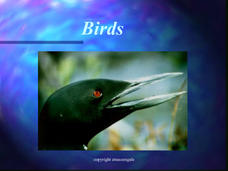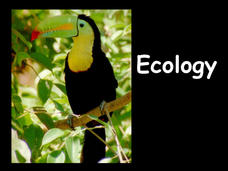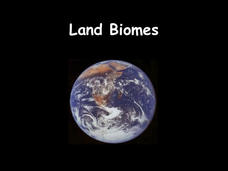Biology Junction
Chemiosmosis - The Mechanism of ATP Synthesis in Chloroplasts
In this biology worksheet, scholars color and label the chemiosmosis process and complete four short answer questions on ATP synthesis.
Biology Junction
Cells and Their Organelles
This series of handouts and images asks young scientists to read short informational paragraphs, answer identification questions, and color and label diagrams of animal and plant cells. This is a complete resource that could be given as...
Biology Junction
Cell Membrane Coloring Worksheet
A simple coloring activity reinforces learning of the cell membrane structure. In addition, junior biologists answer fill-in-the-blank and short-answer questions detailing the function of the cell membrane. This worksheet is five pages...
Biology Junction
Cell Reproduction Concept Map
For this cell reproduction worksheet, scholars complete a concept map using different vocabulary words that describe the different phases a cell goes through in the reproduction process.
Biology Junction
Photosynthesis
Why do leaves change color in autumn? A presentation and worksheet walk through many details of photosynthesis. They explain where photosynthesis occurs, why plants are green, the changing colors in autumn, energy usage, and CAM plants.
Biology Junction
Cell Reproduction
Cycles exist throughout nature, and the cell cycle compares to a life cycle of any other living being. A worksheet and presentation discuss the concepts of cell reproduction through the cell cycle. They cover each phase individually and...
Biology Junction
Hemophilia: Genetics of the F8C Gene
Queen Victoria, of England, carried the hemophilia gene, and her children passed it on to the ruling families of Russia, Spain, and Germany. Scholars learn how hemophilia passes from generation to generation—usually undetected in women....
Biology Junction
Bioenergetics
Bioenergetics strives to describe how living things gain and transform energy for biological purposes. First, pupils learn about the types of energy before exploring the importance of energy in biological processes. Next, they discover...
Biology Junction
Mutations
Are you a mutant? Learn about multiple types of mutations with a presentation to discover the answer. Both genes and chromosomes mutate at various points in their life cycles. Slides describe each type and the resulting impact on...
Biology Junction
Mendelian Genetics
Over the course of seven years, Gregor Mendel grew more than 28,000 pea plants. The large amount of data he collected led him to postulate the rules of genetics as we understand them today. Scholars learn about Mendel, genetics, and...
Biology Junction
Mammals
Mammals include more than 4,000 species and represent the most dominant land animals on Earth. Scholars learn about the large variety of mammals, including orders unfamiliar to most. The presentation highlights the characteristics and...
Biology Junction
Protists and Fungi
It's alive, but what is it? Protists share similarities with plants, animals, and fungi without being classified as any of those three. Learn more about protists and the kingdom fungi with a short presentation. It describes the parts of...
Biology Junction
Mollusks
Mollusks created every shell on Earth. Young scientists learn more about the phyllum mollusca in an informative presentation. It covers their characteristics, body plans, and relationships in the ecosystem. Then, it details each class of...
Biology Junction
Amphibians
Biologists know of more than 2,300 living species of amphibians. Learn more about the four orders of amphibians with an interesting presentation. It explains the similarities and differences between the thousands of species of...
Biology Junction
World of Insects: Characteristics, Orders, and Collecting
Every bug is an insect, but not all insects are bugs. A presentation lists the characteristics of insects, describes their body parts, and explains metamorphosis. It also details every order and includes photographs and multiple facts...
Biology Junction
Birds
Birds adapted to almost every climate on the planet, from the Arctic to the rain forests. A presentation focused on birds covers their similarities and differences. It starts with their evolution from reptiles, their many physical...
Biology Junction
Ecology
Psychologists study human relationships while ecologist study relationships between organisms in the environment. An introduction to ecology and the related vocabulary benefits scholars as they progress through the presentation and...
Biology Junction
Land Biomes
Biomes share similar climates and ecosystems, despite being separated geographically on the planet. A presentation introduces the six most common land biomes. It focuses on the commonalities in climate, plants, and animals with many...
Biology Junction
Water Biomes
Water covers more than 70 percent of Earth's surface. Scholars learn about both freshwater and saltwater biomes in a simple presentation. They compare and contrast the differences in oxygen levels, food sources, and sunlight to better...
Biology Junction
Energy Flow in an Ecosystem
Every living thing requires a food source, thus the interconnections in ecosystems become complex. Scholars learn about these interconnections in a presentation on energy flow. It starts with the sun and moves through many different...
Biology Junction
Echinoderms
Turn a walk on the beach into an in-depth biology lesson! Scholars learn about the different classes of echinoderms in an informative PowerPoint presentation. The lesson explains the unique characteristics of the five different...
Biology Junction
Unsegmented Worms
While you definitely don't want to have tapeworms, they are an interesting species to say the least! They are just one of the species of Platyhelminthes that are part of the lesson presentation. The lesson begins with an overview of the...
Biology Junction
Cnidarians and Ctenophorans
Cnidaria is a broad phylum of 11,000 different species from jellyfish to coral. Most Cnidarians are marine species with a few freshwater examples. A lesson presentation explains the important characteristics of different species of...
Biology Junction
Phylum Porifera – The Sponges
They may not look like it, but sponges are living, breathing creatures! A PowerPoint presentation explains the important characteristics of the invertebrate Phylum Porifera, or more commonly known as the sponges. From their body...

























